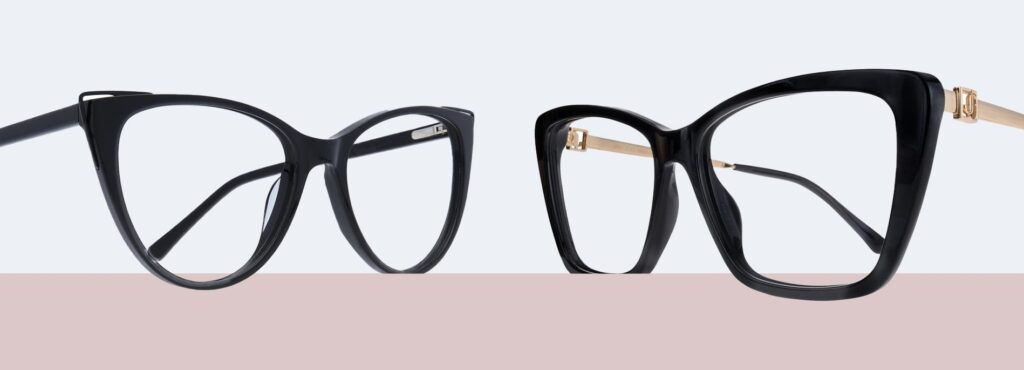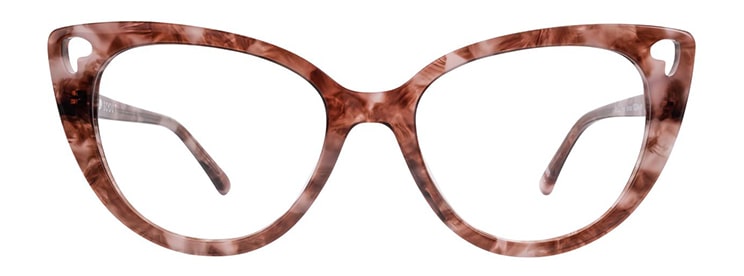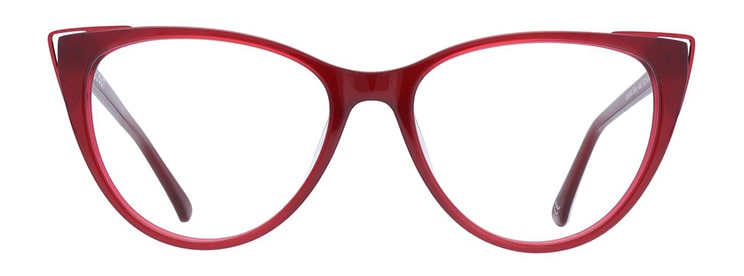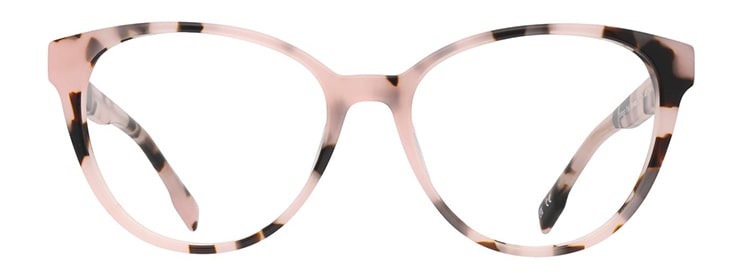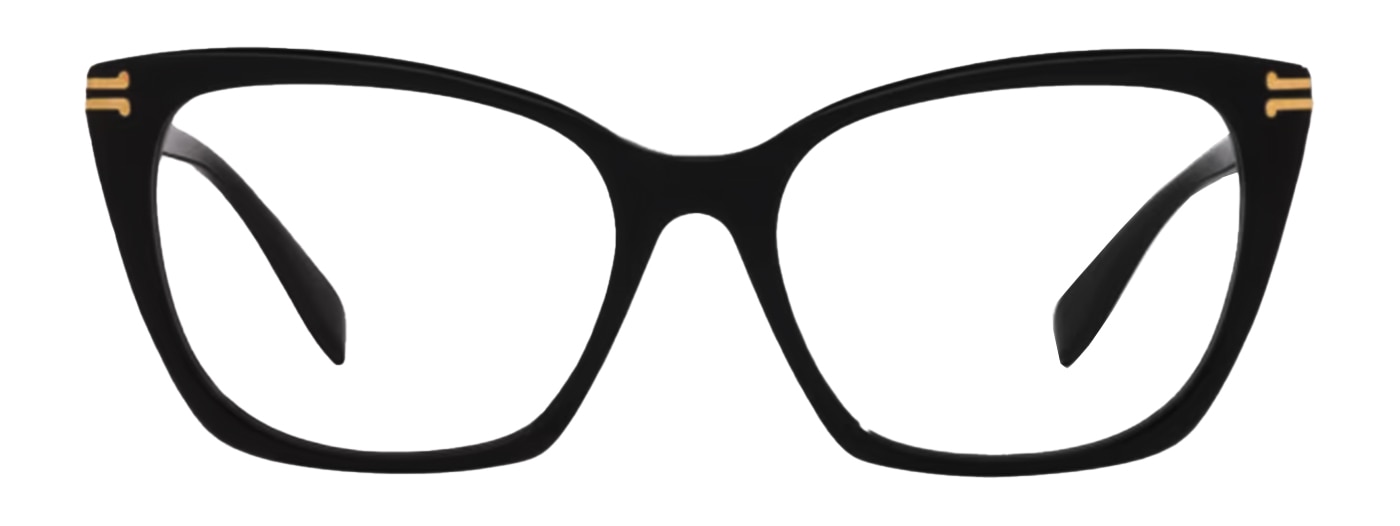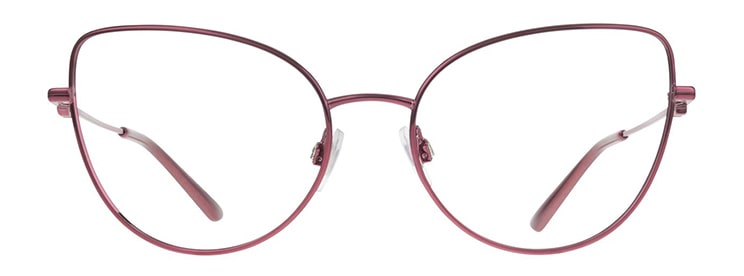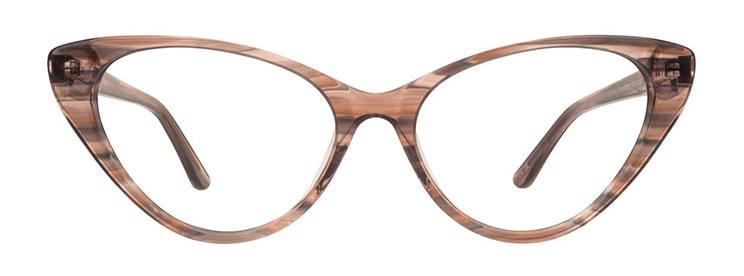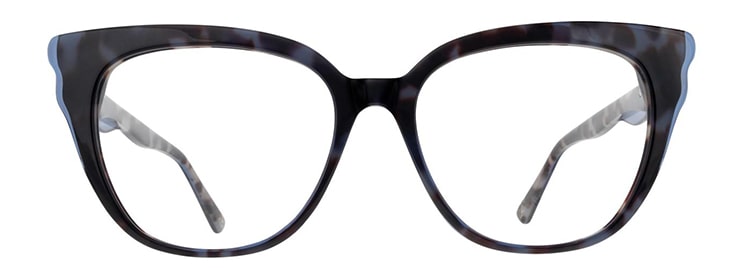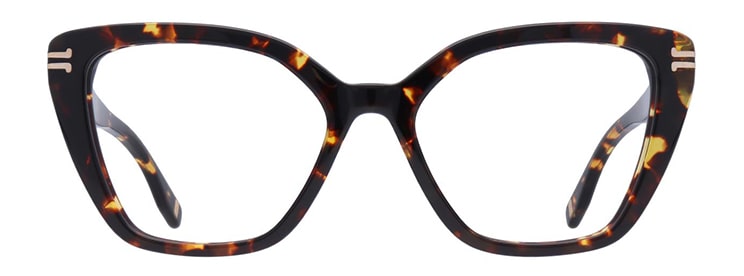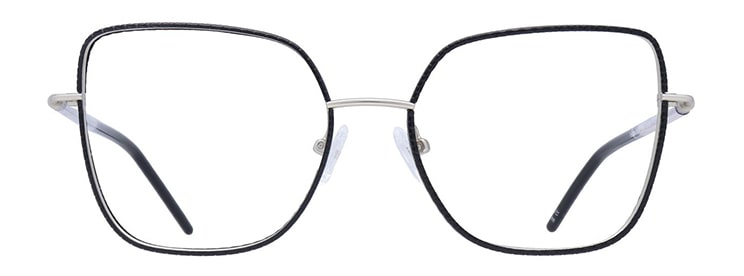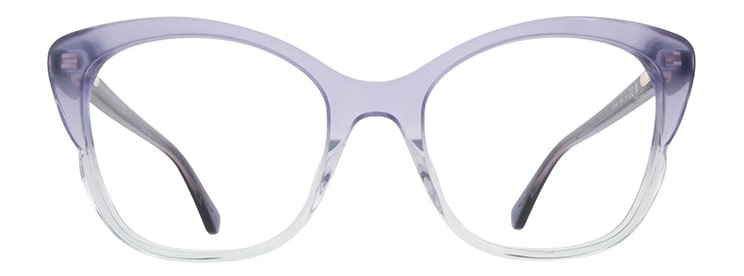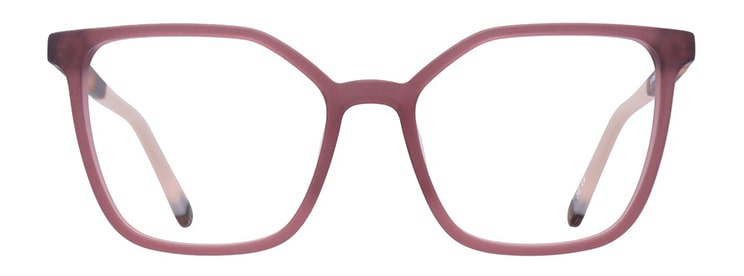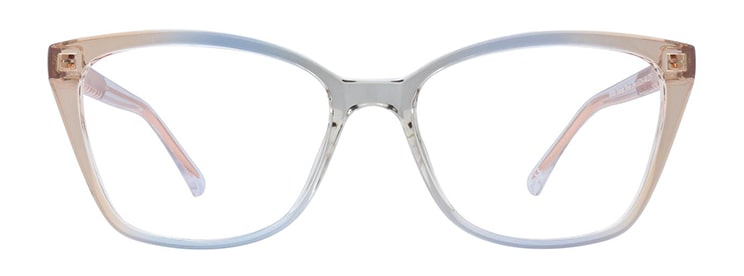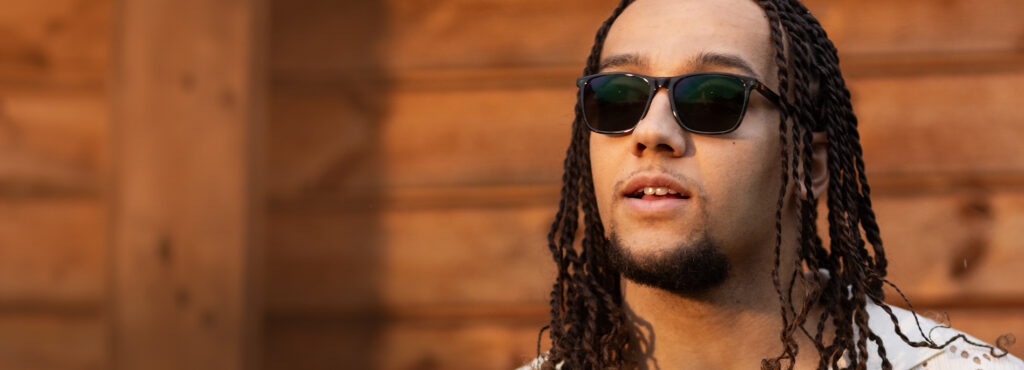Elegant, fierce and flamboyant, butterfly and cat-eye glasses put the fun back into fashion. As stars of the silver screen throughout the 50s and 60s, they both continue to be adorned by trendsetters of every generation. These frame shapes are also a particular favourite for lovers of vintage fashion. Their captivating designs are bold and make the ultimate style statement. Cat-eye and butterfly glasses give women the confidence to express their individuality and sense of style. But what’s the difference between these two very popular designs? Let us enlighten you!
Butterfly vs cat-eye glasses
Butterfly and cat-eye glasses are two very iconic styles full of flair and femininity. They’re similar in many ways. However, once you know what key design details make them different, they’re really easy to tell apart.
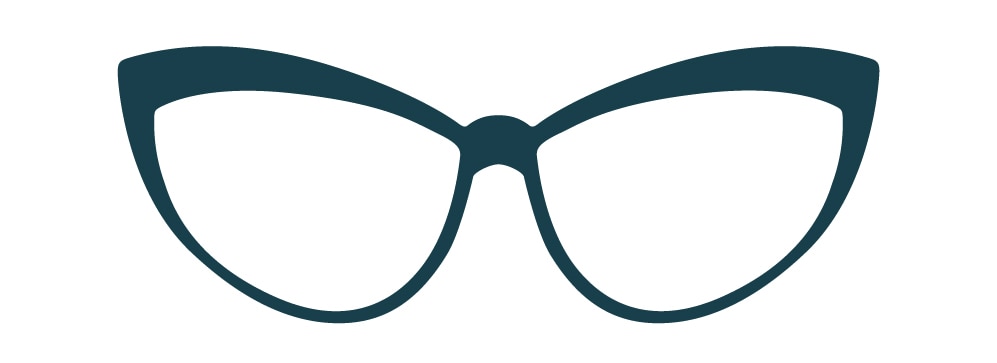
Cat-eye glasses
Classy and sophisticated
A vintage classic full of retro style
Upswept corners that look like the eyes of a cat
Suit most face shapes, especially round, oval, square and heart-shaped faces
Traditionally narrower and rounder in shape
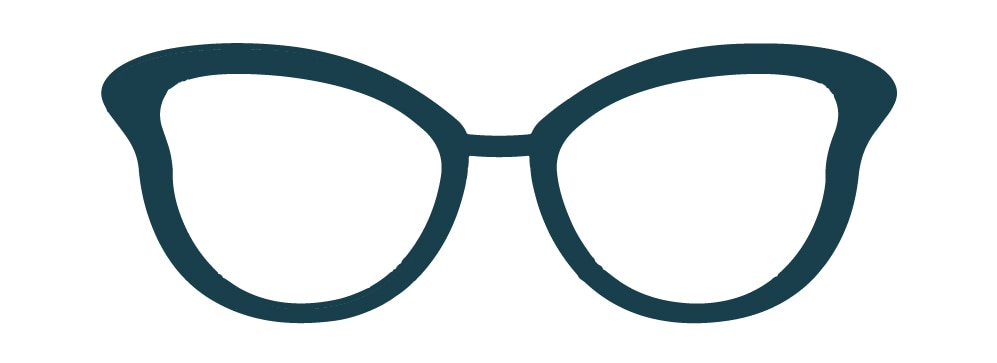
Butterfly glasses
Full of Hollywood glamour and charm
Big and bold, they are typically very eye-catching
The flared temples resemble the shape of butterfly wings
Suit many face shapes, in particular oval, square and heart-shaped faces
Tend to have a wider and more squared-off shape
The enduring charm of the cat-eye
Cat-eye glasses were an exciting innovation of their time, originally created by the visionary entrepreneur Altina Schinasi. Frustrated with the unflattering, masculine prescription glasses of the 1920s, she saw an opportunity to provide stylish eyewear designed specifically for women who were greatly lacking in fashionable options at the time. Drawing inspiration from the whimsical Harlequin masks of Venetian masquerades, she created a dramatic, feminine silhouette that stood out with its unique flair.
Cat-eyes grew wide-spread popularity throughout the 1950s, thanks in part to glamorous film stars and celebrities, most notably Marilyn Monroe. This helped catapult cat-eye glasses into the fashion spotlight. Their elegant, signature upswept corners resembled that of a cat’s eye, a look that was both chic and empowering, which is how the style earned its name. Over the decades, this feline-looking design has continued to evolve, with eyewear brands reimagining the classic shape through luxurious embellishments, oversized profiles and materials ranging from acetate to metal. Fresh interpretations are continually emerging on the fashion scene and celebrities today simply can’t get enough of it!
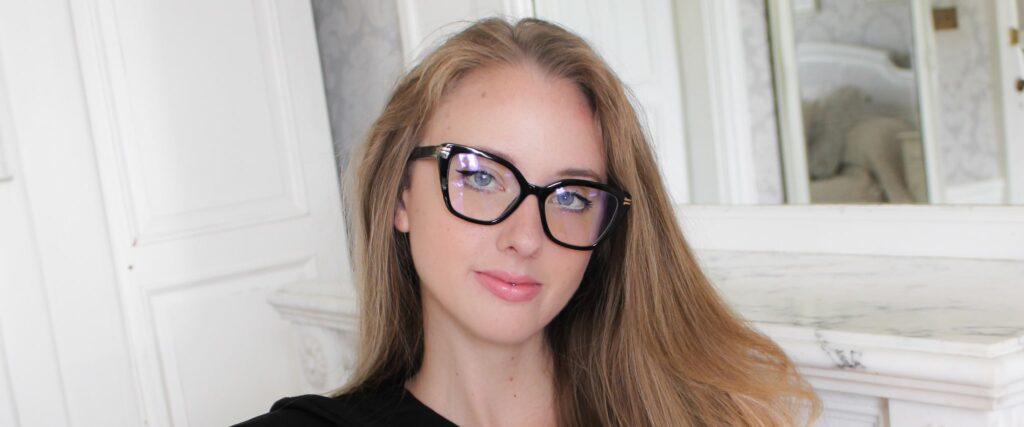
What face shapes do cat-eye glasses look good on?
Cat-eye glasses are among the most versatile frame styles available. They suit a variety of different face shapes and are especially effective at adding lift and definition to oval and round faces, while the upward-swept corners help create the illusion of width, making them a flattering choice for those with narrower, oblong faces. Additionally, cat-eye frames can soften the strong lines of a square jaw, lending a more balanced look.
For diamond-shaped faces, cat-eye glasses accentuate high cheekbones, enhancing the face’s natural contours for a glamorous effect. If you have a triangular or heart-shaped face, opt for a more subtle, smaller cat-eye design. Since the upper part of the frame mimics the broader forehead and tapers downward like your natural face shape, an oversized pair may overwhelm your features. Choosing a more delicate style helps highlight your face without overpowering it.
Discover fashionable cat-eye designs:
Explore this charming collection of cat-eye frames. We’ve included some of our most popular styles and best-sellers, from trendy takes on the classic tortoiseshell and bright pops of colour to classic designs that add a professional edge to your wardrobe.
The flamboyant butterfly takes centre stage
Butterfly frames are the sassy and playful sibling of the classic cat-eye. They gained popularity in the 1960s after they were famously worn by Audrey Hepburn in the hit film Breakfast at Tiffany’s. Her character, Holly Golightly, famously sported oversized, angular frames that resembled butterfly wings, which complemented her elegant, fashion-forward image. The sunglasses not only emphasized Hepburn’s distinctive features but also cemented the butterfly shape as a symbol of timeless sophistication and cinematic glamour. Her influence turned the style into a coveted fashion statement that remains popular to this day.
Butterfly sunglasses, with their bold and curvaceous frame style, also have the added benefit of shielding your eyes and keeping you protected from the sun. Their oversized shape will help to give you an air of mystery. Look like a Hollywood star and captivate the crowds with your elegance in a pair of chic butterfly frames. They are sophisticated and their versatility means they will suit a variety of outfits.
Compared to the timeless and consistent style of cat-eyes, butterfly frames are unique and vary greatly from one design to another. This is partly the reason they have such an allure for fashionistas.
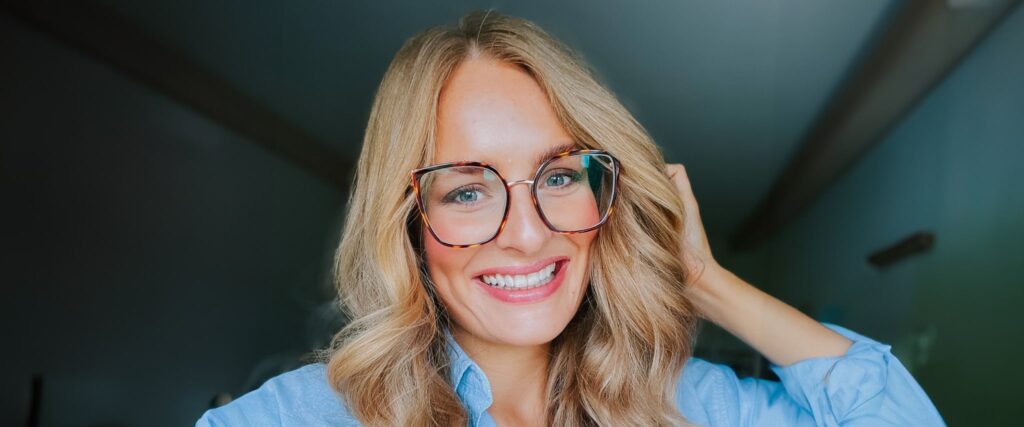
What face shapes do butterfly glasses look good on?
Butterfly frames are a great choice for those with oval or oblong face shapes, as their design naturally highlights the cheekbones and draws focus to the eyes, shifting attention away from the overall length or structure of the face. Unlike the traditional cat-eye, butterfly frames offer a more balanced top-to-bottom shape, making them especially flattering for triangular and heart-shaped faces by adding harmony to the lower portion of the face.
These frames can also complement square and diamond face shapes, provided they feature wide upper corners and aren’t overly bulky. The broader design helps soften strong angles and sharp features. For round faces, opting for butterfly styles with squared edges creates a pleasing contrast that enhances facial definition.
Try our trendsetting butterfly frames:
Delve into this eye-catching range of butterfly glasses frames. These high-quality designs come in a range of shapes and designs from from full-rim to semi-rimless and from eye-catching to subtle frame colours.

